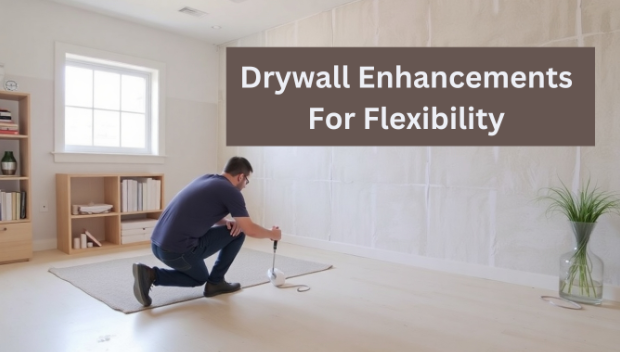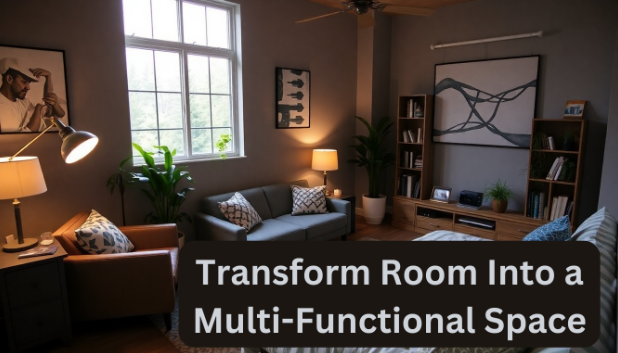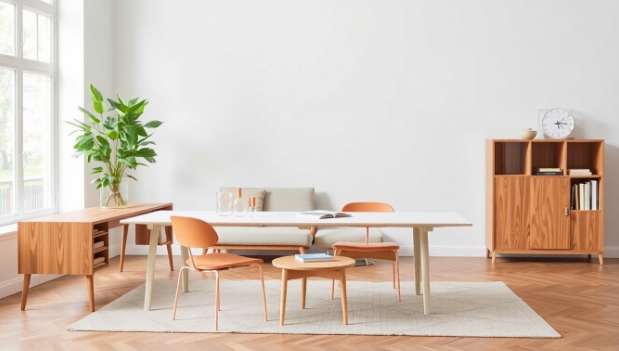In an age where maximizing living spaces is more critical than ever, learning how to transform your space into a multi-functional area is a smart and sustainable solution. Whether you’re living in a compact apartment, a family home, or a shared co-living space, creating a versatile room can enhance functionality and even improve your quality of life.
Here’s an in-depth guide on how to transform your space with innovative ideas, design principles, and practical solutions that go beyond the obvious.
Start With Purpose: Identify Core Functions
Before diving into design and furniture, consider the primary and secondary purposes of the room. Ask yourself:
- Is this space for work, relaxation, entertaining, or exercise?
- Will it serve as a guest room occasionally?
- Can it adapt to your evolving needs?
Write down the key functions and prioritize them. For example, a spare bedroom might double as a home office or workout space, while a living room could serve as an entertainment hub and reading nook.
Flexible Furniture: The Heart of Multi-Functionality
Invest in furniture that can serve multiple purposes:
- Murphy Beds: These wall-mounted beds can be folded away to free up space during the day.
- Modular Sofas: Rearrangeable sections allow you to switch between lounging, hosting guests, or creating a makeshift sleeping area.
- Extendable Tables: Perfect for dining, working, or crafting, these tables can be adjusted for different activities.
- Hidden Storage Pieces: Ottomans, benches, and coffee tables with storage compartments help reduce clutter.
Smart Zoning: Divide Without Walls
To transform your space into a versatile area, create zones for each activity. Instead of building walls, use creative methods to visually and functionally separate spaces:
- Area Rugs: Define zones by placing rugs under specific furniture groupings.
- Open Shelving Units: These can act as room dividers while providing storage.
- Curtains or Sliding Panels: Add privacy and versatility to transform spaces like guest areas or workspaces.
- Lighting: Use different lighting styles (e.g., task lighting for work, ambient lighting for relaxation) to delineate spaces.
Optimize Vertical Space
When floor space is limited, look upward:
- TV Mounting: A mounted TV not only saves valuable floor space but also enhances the overall aesthetics of your multi-functional room. Consider a professional TV mounting service to securely install your TV and create a sleek, clutter-free environment.
- Wall-Mounted Desks and Shelves: Save floor space by installing foldable desks and vertical storage units.
- Loft Beds: Create a sleeping area above and free up room below for an office, play zone, or seating.
- Pegboards and Hooks: Ideal for storing office supplies, kitchen tools, or workout gear in a visually appealing way.
Technology Integration for Adaptability
Smart technology can elevate your multi-functional space:
- Adjustable Smart Lighting: Program lighting to suit different moods or activities.
- Convertible Screens: Use a retractable projector screen for movies and slide it away for a clear wall.
- Voice-Controlled Devices: Automate tasks like adjusting blinds, switching lights, or playing music.
- Foldable Monitors: These can be stowed away to maintain a minimalist aesthetic.
Hidden Features: Maximize Every Inch
Hidden features add an element of surprise and practicality:
- Pull-Out Storage: Add pull-out shelves under stairs, beneath beds, or within furniture.
- Pop-Up Furniture: A coffee table that converts into a dining table or desk is an excellent investment.
- Pocket Doors: These doors slide into the wall, saving space compared to traditional swing doors.
Drywall Enhancements for Flexibility

Drywall innovations can enhance the functionality of your space:
- Movable Partitions: Create adjustable walls that can redefine your room as needed.
- Recessed Shelves: Utilize wall cavities for storage without occupying floor space.
- Soundproofing Panels: Ideal for workspaces or entertainment zones, these features can be seamlessly incorporated with the right approach. Look into Drywall resources for practical tips and creative ideas to maximize flexibility and achieve a professional finish.
Design for Emotional Flexibility
Multi-functional rooms aren’t just about practicality; they’re also about creating spaces that adapt to emotional needs:
- Color Schemes: Use neutral or adaptable palettes that can shift with different purposes.
- Textures: Introduce fabrics and materials that create coziness (e.g., throw blankets for relaxation zones) or focus (e.g., smooth surfaces for work areas).
- Decor That Transforms: Wall art that’s interchangeable or modular can keep the space fresh and adaptable.
Sustainability and Longevity
Creating a multi-functional space is a long-term investment. Choose materials and furniture that are durable and environmentally friendly:
- Upcycled Furniture: Give old pieces new life with a fresh coat of paint or new upholstery.
- Multi-Use Appliances: Invest in devices like air purifiers that also serve as fans or space heaters.
- Timeless Design: Avoid trends and focus on classic, versatile styles that won’t require constant updates.
Personalization: Make It Yours
Your space should reflect your personality and lifestyle:
- Incorporate decor that inspires you—family photos, art, or travel mementos.
- Use chalkboard walls or whiteboards for scheduling, brainstorming, or leaving creative notes.
- Add plants to bring in life and purify the air, making the room feel more dynamic.
The Transformation Process: Step-by-Step
- Declutter: Start by removing items that don’t serve the room’s intended purposes.
- Plan Layout: Sketch out where each zone and piece of furniture will go.
- Shop Smart: Purchase versatile furniture and storage solutions based on your plan.
- Incorporate Layers: Add rugs, curtains, and lighting to define and enhance zones.
- Test and Adjust: Live in the space for a few weeks and tweak as needed for comfort and functionality.
Conclusion
Transforming any room into a multi-functional space requires creativity, planning, and the right tools. By focusing on purpose, integrating flexible furniture, optimizing vertical space, and using smart technology, you can unlock your room’s full potential. Whether you aim to enhance productivity, relaxation, or both, this transformation can elevate your living experience and bring a sense of order and beauty to your home.
Embrace the challenge of creating a room that works as hard as you do, and enjoy the benefits of a truly adaptable space.

